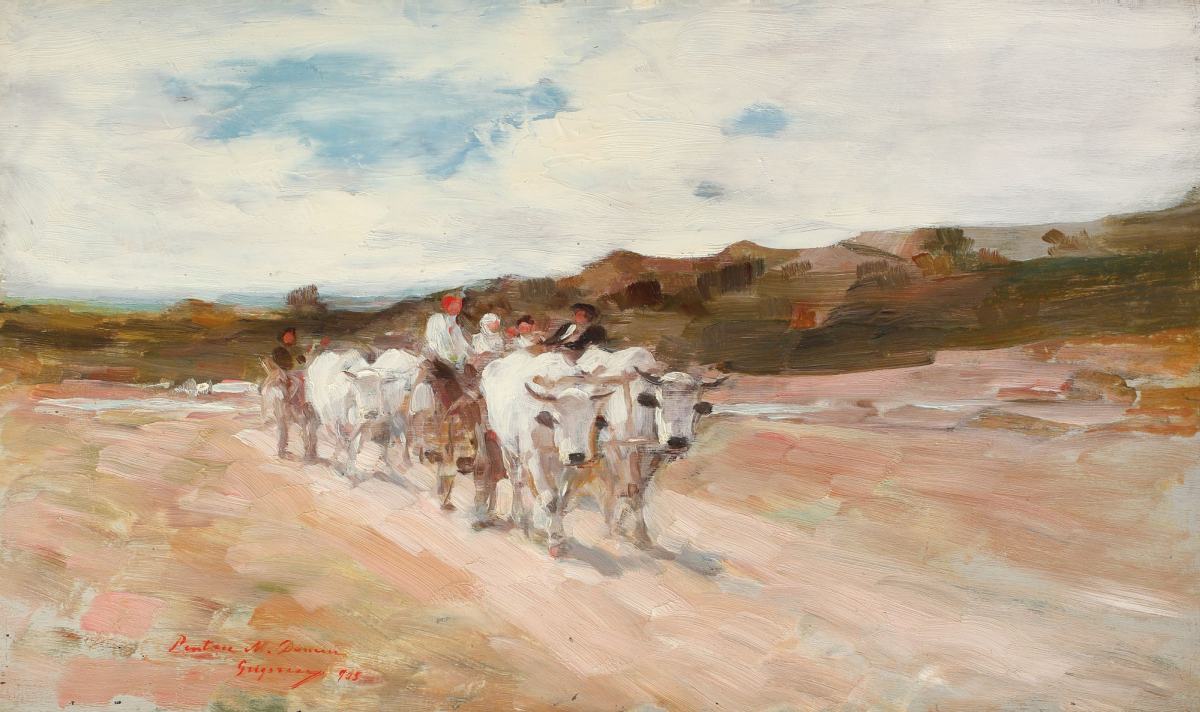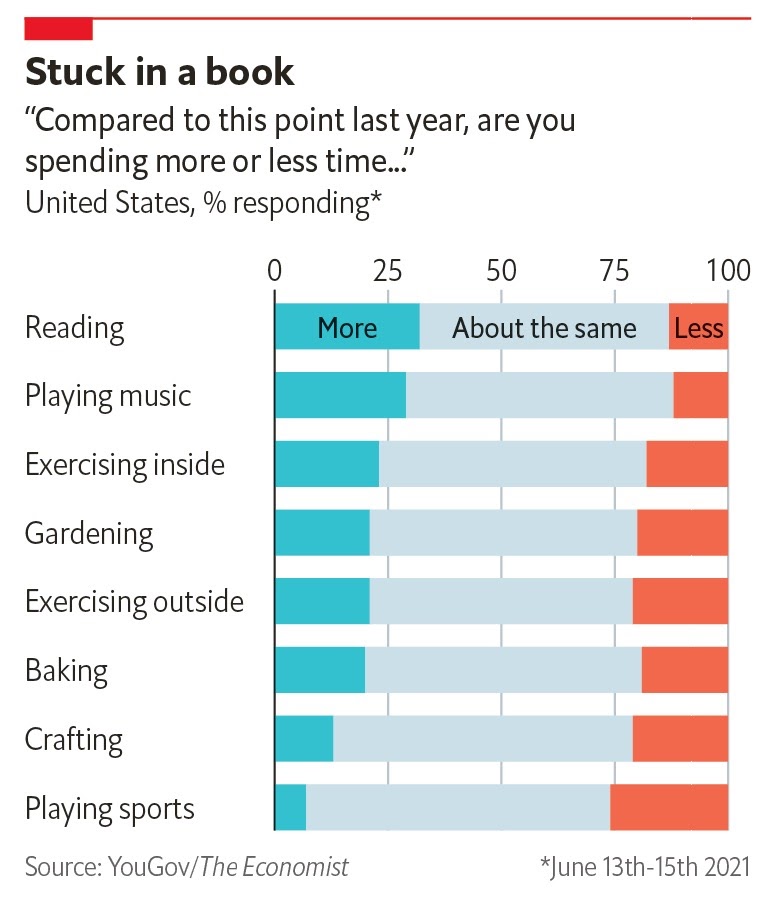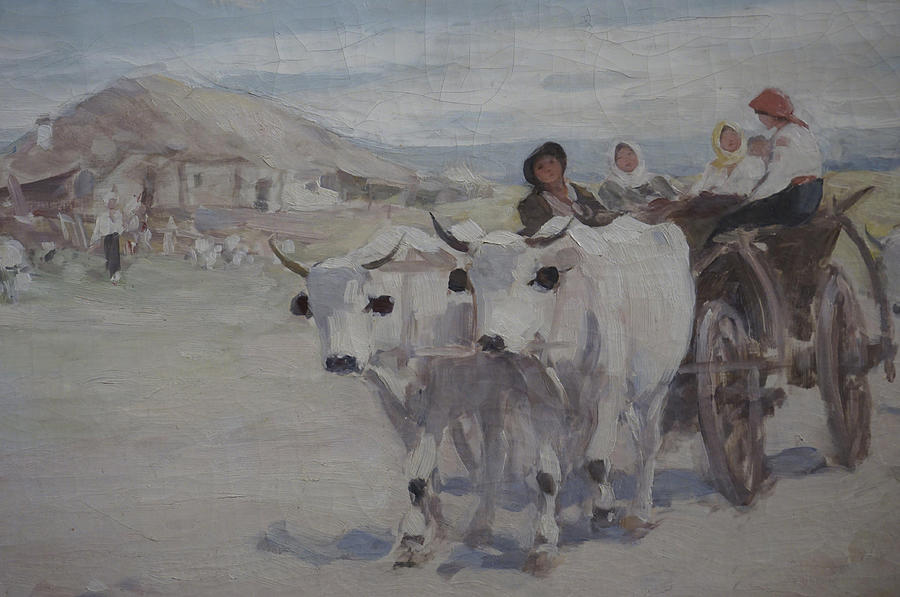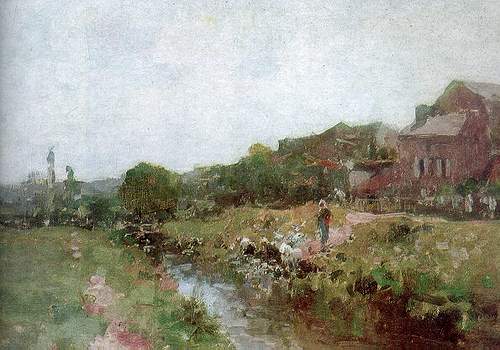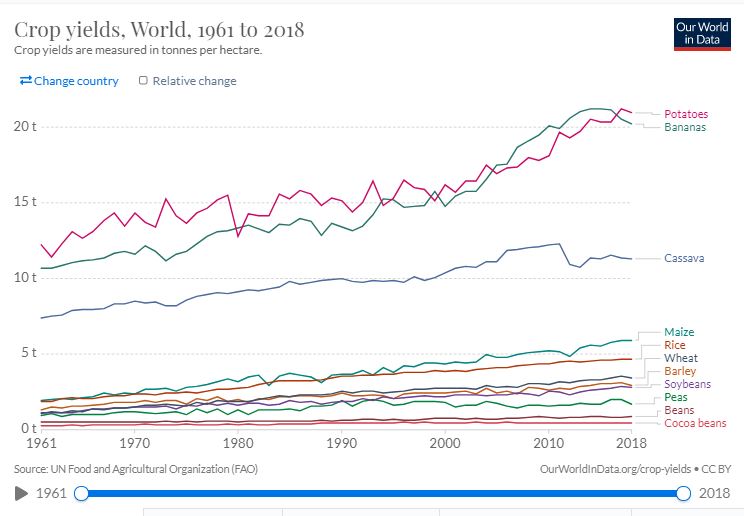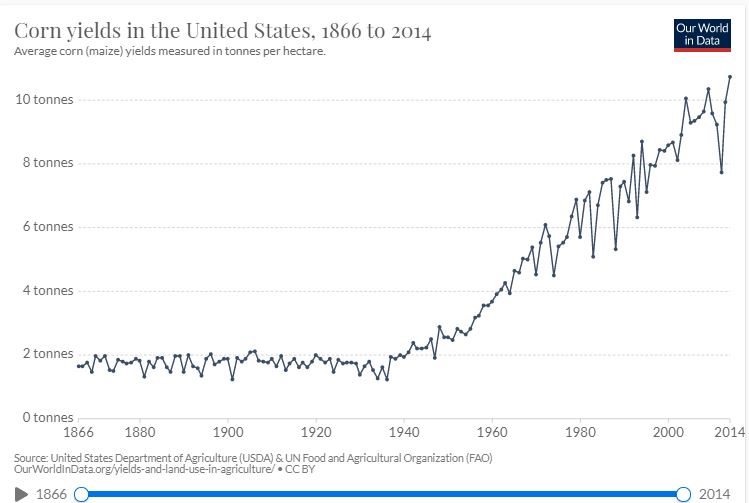|
You
can also view the message online
|
||||||||
 Châtenay-Malabry (FR - 92290), July 05, 2021 EFITA newsletter / 993 - European Federation for Information Technology in Agriculture, Food and the Environment Do not miss the Virus Jokes in English and French The informatique-agricole.org site now offers you the possibility of subscribing the RSS feeds of its two newsletters See RSS feeds to implement to ensure that you continue to receive this newsletter To unsubscribe this newsletter, please contact me directely: guy.waksman(a)laposte.net if this link Unsubscribe does not work. Please note that I changed the presentation of the links that are embedded in the name of the web service. 
To correspond with me (GW), please use this address: guy.waksman(a)laposte.net To subscribe the efita newsletter (please ask your friends and colleagues to test this link) Efita Newsletters subscription Before computers... Weekly newsletters about ICT in Agriculture in English and French Both newsletters have around 14000 subscribers. >>> Last weekly EFITA Newsletters in English (created in 1999) Efita Newsletters >>> Last weekly AFIA Newsletters in French (created more than 20 years ago in 1997) Afia Newsletters >>> Statistics for the last efita newsletter >>> Last issue of the afia newsletter >>> Last available satistics for the afia newsletter Technology: A necessary requirement to maintaining rural life? By Michelle Miller, Farm Babe .../... These tools not only help farmers perform tasks on their operation and increase profitability but also help increase public perception and support of ag industries. Many of the tools mentioned previously help reduce resource use, particularly water and fertilizer. Addressing concerns of environmentally sustainability has helped improve public perception since this hot topic began plaguing ag in the last decade. Increased use of technological tools in the livestock sector have shown improvements in animal welfare, and hard data is being produced in operations across the U.S. to prove animals are healthy and well cared for. Adoption of technology has made the life of the producer easier, but also confirmed to the public that agriculturalists are committed to providing a safe, healthy food source in the best way possible. One of the biggest areas of technology that would provide the impact to rural residents is internet access. A reliable internet connection offers many benefits to your life, not only in the areas of leisure like accessing streaming services or social media, but also in your ability to access educational information online, business management tools, and agricultural tech tools related to production. According to Pew Research Center, only 63 percent of rural residents have at least a broadband internet connection at home, with an additional 24 percent stating that accessing high-speed internet is a major problem in their community. Lack of access to and use of internet tools in rural areas delay the potential adoption of future technological tools. Work to expand internet access in rural communities will increase the ability of producers to better their operations and maintain the rural lifestyle. See agdaily.com Leisures during lockdown In defence of agriculture: Using facts and science, By Jonathan Lawler Going through social media a few days ago I was pleasantly surprised to come across a post from the Ohio Farm Bureau. It was an open letter to legislators debunking the myths around animal agriculture. I know the letter’s author, Ty Higgins of Ohio Farm Bureau, and am always impressed by his passion for agriculture and willingness to advocate for farmers every time I have the opportunity to speak to him. What impressed me about the article and open letter the most was simply the fact that it had been written. What I see Ty and his team at Ohio Farm Bureau doing is what every state level farm bureau should be doing across the country. I hear from farmers around the country, and world, through my own farming experiences and through my social media outreach. .../... See agdaily.com What to look for when buying your first application drone Most farmers will be taking a step into unknown territory when they buy their first application drone. Time invested in preparation and research will help you avoid making costly mistakes. See Futurefarming.Com Nothing
is more responsible for the good old days than a bad memory: The
Return from the Fair by Nicolae Grigorescu
Check out the application drone catalogue See futurefarming.com Drone use and adoption across hemispheres See futurefarming.com Rules allow for big expansion in drone spraying See futurefarming.com Americans are divided on the impact of immigrants, but not that they have made the country (source: The Economist newsletter) What technology can halt the unstoppable rise of the drones? See futurefarming.com Getting started with drones See futurefarming.com American Robotics and SARA automate BVLOS drone operations See futurefarming.com Nothing is more responsible for the good old days than a bad memory: Laundrywoman in Brittany, by Nicolae Grigorescu
Start-ups: Agtech startups helping Canada’s economic recovery A new report, Growing Canada: How Agribusiness is Evolving, by KPMG in Canada, finds that agribusiness has the potential to help Canada’s economic recovery through the adoption of agricultural technologies. See futurefarming.com Drone catalogue: Check out the application drone catalogue Future Farming has put together the world's first application drone catalogue. See futurefarming.com Mixed cultures: Swiss research shows mixed cultures lead to a greater yield An ETH Zurich research project reveals that mixed cultures produce a higher yield than monocultures. See futurefarming.com Application drones: What to look for when buying your first application drone Most farmers will be taking a step into unknown territory when they buy their first application drone. As well as having a lot to learn, buyers are also likely to be dealing with suppliers they have not used before. Time invested in preparation and research will help you avoid making costly mistakes. See futurefarming.com Double-cropping: Increasing net returns by double-cropping soybean By double cropping soybean after winter wheat, farmers can increase their net returns. These increased returns come without needing to farm additional acreage, a new study shows. See futurefarming.com Nothing is more responsible for the good old days than a bad memory: Riposo in Maremma, di Giovanni Fattori, 1870-1873 ca. Tools and data: How to control growth phases intelligently and efficiently Image processing with cameras and artificial intelligence enables applications that were previously unthinkable. In agriculture, for example, it supports the optimal application of fertilisers, the visual monitoring of products and growth phases, and the processing of harvested crops. Intelligent systems for collecting and analysing information are also a valuable tool when it comes to detecting conditions, making decisions, and triggering follow-up processes. See futurefarming.com Robotic solutions firm Soft Robotics secures $10m Series B extension, FoodBev Media, by Antonia Garrett Peel (seen by AFN) Food robotics company Soft Robotics has raised a $10 million Series B extension, as it looks to further expand its commercial operations. Based in Massachusetts, US, Soft Robotics is a technology company that designs and builds automated picking solutions using proprietary soft robotic grippers, 3D machine perception and artificial intelligence (AI). The company’s robotic solutions are used by machine builders to tackle piece picking problems in areas such as agriculture, food processing and logistics. Soft Robotics claims to have experienced a spike in demand for its products during the Covid-19 pandemic, which it says has increased pressure for automation. See foodbev.com Smartfarm (NL) >>> Smartfarm (1): Tips for the optimal crop protection by Erno Bouma (Part 1) Even though the field of farming is changing fast, some tasks remain the same – such as the challenge of protecting the crop the best way possible. The methods of facing this challenge, however, has changed a lot. SmartFarm’s leading agrometeorologist, Erno Bouma, explains in this three-part series how it is done right. What is important to protect the crop during the growing season? To protect the crop in the best way possible, farmers need to know the exact moment for treating their crop with pesticides. The data obtained through classic weather forecasts, however, is not enough. The problem: this data is collected at an height of about 200 cm -which is not where the crop actually grows. This leads to a difference of the actual temperature of the leaves and the temperature measured by weather stations of up to 10 degree Celsius. This is changing the math behind spraying considerations drastically. Are there other factors farmers need to consider? Even though the temperature is a major factor when it comes to successful crop protection, the air humidity and precipitation also play an important role for the success in the treatment of the crop. Ultimately, the formulation of the pesticides needs to be taken into account, as it shows how the pesticides are absorbed by the crop and which factors influence the speed of their permeation. Only if of all of these factors are considered, the best moment for spraying the crop can be found. How can these factors be accounted for? There are a lot of factors that make successful farming during the growing season highly difficult. Luckily, keeping track of them is made easy with our top notch technology. SmartFarm does not only offer the most reliable data with the FieldMate, measuring every relevant aspect directly in the field. We also translate this data into easily comprehensible information, helping farmers to always find the perfect moment for treating their crop with our SprayPlanner. Without the danger of getting lost with all the factors that need to be considered. See smartfarm.nl Nothing is more responsible for the good old days than a bad memory: Acquaiole livornesi, di Giovanni Fattori, 1865 >>> Smartfarm (2): Tips for the optimal crop protection by Erno Bouma (Part 2) Optimal crop protection is one of the most challenging tasks for farmers. The very success of their endeavours actually stands and falls with the humidity. Why, explains SmartFarm’s leading agrometeorologist, Erno Bouma, in the second part of this three-part series. Why do we look at humidity? The connection between crop protection and the humidity of the crop might not be apparent at first glance, but it is one of the most crucial factors for any successful treatment. This originates from the fact that dryer crops produce more cutin in their leaves. While this wax-layer is protecting them from drying out, it also makes it very hard for the leaves to absorb any water based pesticide, deeming any attempt to protect the crop with such substances to fail from the very start. Which humidity needs to be considered? To make sure the cutin is not hindering the treatment, the leaves of the crops need to be sufficiently humid. But whether the crop is in the right state does not depend on the commonly looked at relative humidity, but on the dewpoint temperature. This is the temperature at which the humidity in the air actually is condensing on the leaves. Unlike the relative humidity, the dewpoint temperature is very stable and not influenced by changing temperatures, giving the farmer crucial information on when to treat the crops. How can these factors be accounted for? Considering the severe impact of humidity on the success of crop protection, the perfect moment for spraying needs to be chosen carefully. This task can be utterly challenging if it was not for our top notch technology. The FieldMate does measure the essential dewpoint temperature directly in the field and translates this data into easily comprehensible information. Then, our SprayPlanner is considering the humidity of the plants to help farmers finding the perfect moment for treating their crop. This makes crop protection an easy task, even without being an expert on crop humidity. See smartfarm.nl With covid restrictions easing in many parts of the world, you might be thinking about going on a trip... >>> Smartfarm (3): Tips for the optimal crop protection by Erno Bouma (Part 3) There are many factors to be considered when it comes to optimal crop protection. What many farmers do not know is the important role of dew. What makes dew such a crucial factor, explains SmartFarm’s leading agrometeorologist, Erno Bouma, in the last part of this three-part series. What is dew? Optimal crop protection is not possible without focussing on dew. Dew is a result of the leaves cooling off in the evening. They then become colder than the surrounding air and the so called dewpoint temperature. As a result, the humidity in the air is condensing on the leaves, making them moist. This process only stops when the sun rises in the morning and even after that, the leaves remain wet for several hours to come as the dew needs to evaporate again. What role is dew playing for crop protection? Dew is a form of moisture and as such it has an impact on how the crop can be protected and on how infections can affect it. Crop treatment with pesticides does not work the same on crop covered with dew as it would normally do, as most substances cannot stick to wet surfaces very well. Besides that, dew is opening up the possibility of fungal infections. Fungal spores make use of a moist environment to develop and penetrate the crop and get into the cells, causing severe damage. This makes dew a multifaced factor, influencing the planning for crop treatments on many levels. How can these factors be accounted for? Considering the possible negative consequences of dew on the crop and its impact on fungal infections, farmers need to act carefully when treating their crop. Assistance with this challenging task is provided by the FieldMate, which measures the dewpoint temperature directly in the field and translates this data into comprehensive information. The locally measured dew acts as input for our SprayPlanner and with it contributes to finding the perfect moment for farmers to treat their crop. This does not only protect the crop in general, but also helps reducing the danger of fungal infections. Be ready to take the first step Ready to join us on our journey to the future of farming? Then embark now and learn more about Erno’s insights and SmartFarm by contacting us. We look forward to hearing from you! See smartfarm.nl The top 5 misconceptions about satellite imagery for agriculture From the early days of Landsat to present-day commercial providers, agriculture has always been one of the largest adopters of satellite imagery. By partnering with leading agricultural companies over the years, Planet has gained a window into the day-to-day challenges, concerns, and opportunities that growers have across the globe. At Planet, our vision is to deliver precise and reliable field-level crop information to help agriculture companies and their growers optimize inputs, monitor crop health, and improve yield. Here are the top misconceptions we’ve encountered about using satellite imagery for agriculture: 1. ‘My customers don’t trust results from satellite data’ 2. ‘My customers won’t be able to do anything with imagery. They just want answers’ 3. ‘We only need a few images over the growing season’ 4. ‘Drones are the best solution for insights. Satellites are too coarse in spatial resolution to tell me anything’ 5. ‘Public data is good enough, and commercial satellite data isn’t cost-effective’ …/… See agfundernews.com Czech e-grocer Rohlik raises $119m to join unicorn club three months after $238m round, AFN, by Jack Ellis - Rohlik, a Prague-based startup offering on-demand delivery of groceries, has raised €100 million ($119 million) in a Series C round that values the business at €1 billion ($1.2 billion.) - Index Ventures led the round, with participation from other earlier investors including Partech and Quadrille Capital. - The Czech platform buys its stock wholesale from large suppliers and distributors, and also partners with smaller businesses to add local products to its 17,000-plus selection – fulfilling its users’ orders within two hours. See agfundernews.com Nothing is more responsible for the good old days than a bad memory: La bergère de Odoardo Borrani (1834–1905) The Farm Barbell, by Carl Lippert The future of agriculture is large farms producing commodities and small farms creating value added products. Startups should build penny shaving machines for scaled farms and margin capture machines for small farms. What will farming look like in 2050? Let's take a look back and pretend history tells the future. I'm pretty sure if you where sitting at the USDA in 1990 you could have done a fair job of guessing how many dairy farms would exist in 2020. You definitely wouldn't have got the direction wrong. Farms get bigger at a rate faster than the consumption pie expands and so we have fewer total farms over time. A good rule of thumb I'm stealing / bastardizing from the USDA is that every 30 years farm numbers in dairy reduce by 3/4. .../... Corn yields in the US In the chart we have plotted average corn (maize) yields in the United States from 1866-2014, based on data from the United States Department of Agriculture (USDA) and UN FAO. As we see, average corn yields in the United States remained relatively flat throughout the 1800s until the 1930s. In the period since 1940, yields have increased more than five-fold.What caused this significant drive in yield improvements? There are a number of factors which are likely to have contributed to sustained yield gains: fertilizer application, irrigation, increased soil tillage, and improved farming practices. However, a key driver in the initial rise in yield is considered to be the adoption of improved corn varieties from plant breeding developments. The initial period of yield gains in the late 1930s-early 1940s coincides with the transition period of farmers from open-pollinated varieties to hybrids. This process of cross-breeding between open-pollinated varieties, combined with improved breed selection practices is thought to define the key turning point in US corn yields.
The mRNA Vaccines Are Extraordinary, but Novavax Is Even Better, By Hilda Bastian Persistent hype around mRNA vaccine technology is now distracting us from other ways to end the pandemic. .../... Don’t get me wrong—the Pfizer and Moderna vaccines have been extraordinary lifesavers in this pandemic, and we may well be heading into a new golden age of vaccine development. (This week, BioNTech started injections in an early trial for an mRNA vaccine for melanoma.) But even the best experts at predicting which drugs are going to be important get things wrong quite a bit, overestimating some treatments and underestimating others. Pharmaceuticals are generally a gamble. But here’s what we know today, based on information that we have right now: Among several wonderful options, the more old-school vaccine from Novavax combines ease of manufacture with high efficacy and lower side effects. For the moment, it’s the best COVID-19 vaccine we have. See theatlantic.com Nothing is more responsible for the good old days than a bad memory: Au fourneau de Odoardo Borrani (1834–1905) Chiste 5 - Soy Rosa. - Ah, perdóname, es que soy daltónico. Chiste 6 - Oye, ¿cuál es tu plato favorito y por qué? - Pues el hondo, porque cabe más comida… Chiste 7 ¿Qué pasa si tiras un pato al agua?. Nada. Chiste 8 - Ayer llamé a la policía porque unos ladrones robaron en mi casa y se llevaron hasta los vasos. - ¿Y los detuvo? - Sí, sí, los de tubo también. Chiste 9 ¿Cómo te llamas? - Lancelot. - Pues atrápalot… Chiste 10 - Papá, ¿qué está más lejos, Córdoba o la Luna?. - Pero vamos a ver, ¿tú ves desde aquí Córdoba? The distribution of this efita newsletter is sponsored by vitisphere.com Please, contribute to the content of your efita newsletter, and advertise your events, new publications, new products and new project in this newsletter. Without your support, it will not survive! Contact: Guy WAKSMAN E-mail: guy.waksman(a)laposte.net To read this newsletter on our web site See Afia The archives of this newsletter See Afia About the EFITA mailing list You can use the efita moderated list (> 15000 subscribers) to announce any event / product / web site / joke (!) related to IT in agriculture, environment, food industry and rural areas. If you want to subscribe a friend, please fill in his form. If you do not wish to receive our messages, please fill in the following form... |


